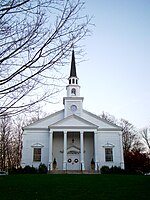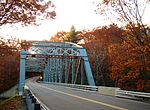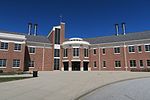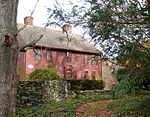Canterbury Female Boarding School

The Canterbury Female Boarding School, in Canterbury, Connecticut, was operated by its founder, Prudence Crandall, from 1831 to 1834. When townspeople would not allow African-American girls to enroll, Crandall decided to turn it into a school for African-American girls only, the first such in the United States. The Connecticut legislature passed a law against it, and Crandall was arrested and spent a night in jail, bringing national publicity. Community violence forced Crandall to close the school. The episode is a major incident in the history of school desegregation in the United States. The case Crandall v. State was "the first full-throated civil rights case in U.S. history.... The Crandall case [in which a key issue was whether blacks were citizens: 144 ] helped influence the outcome of two of the most fateful Supreme Court decisions, Dred Scott v. Sandford in 1857[] and...Brown v. Board of Education in 1954.": xi
Excerpt from the Wikipedia article Canterbury Female Boarding School (License: CC BY-SA 3.0, Authors, Images).Canterbury Female Boarding School
South Canterbury Road,
Geographical coordinates (GPS) Address Nearby Places Show on map
Geographical coordinates (GPS)
| Latitude | Longitude |
|---|---|
| N 41.69813 ° | E -71.97161 ° |
Address
Prudence Crandall Museum Library
South Canterbury Road 1
06331
Connecticut, United States
Open on Google Maps











